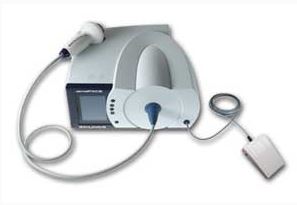FDA approves diabetic foot ulcer shock wave device

The US regulator has approved the first ever shock wave wound healing device, for use in patients with diabetic foot ulcers.
The Dermapace System from Sanuwave is intended for use with chronic, full-thickness ulcers about the size of a soft drink can top.
Limited to use in wounds without bone exposure, Dermapace uses pulses of energy similar to sound waves to mechanically stimulate the wound.
The device is intended for adults aged 22 years and older, presenting with ulcers lasting for more than 30 days, and should be used along with standard ulcer care.
It can be used on ulcers extending through the epidermis, dermis, tendon, or capsule.
Approval was based on data from two randomised controlled studies with a total of 336 patients receiving either usual care including wet-do-dry dressings, or debridement as needed, plus DermaPace or a sham shock wave therapy.
Both patient groups included those with poorly controlled and well-controlled blood glucose levels.
The patients who had between one and seven treatments with Dermapace showed an increase in wound healing at 24 weeks with a 44% wound closure rate.
Those patients treated with the sham shock wave therapy showed a 30% wound closure rate during the same time period.
The most common side effects observed were pain during application of the device, local bruising and numbness, migraines, nausea, fainting, wound infection, infection beyond the wound and fever.
The FDA reviewed the device through a pathway for low- to moderate risk devices that are new to the market.
The decision allows for a short review of similar devices in the future.
Around 30 million people in the US have been diagnosed with diabetes, according to the Centers for Disease Control and Prevention, and around 25% of patients experience a foot ulcer in their lifetime.
Amputation is sometimes necessary when circulation is so poor that a foot ulcer fails to heal, or when treatment fails to stop the spread of an infection.












